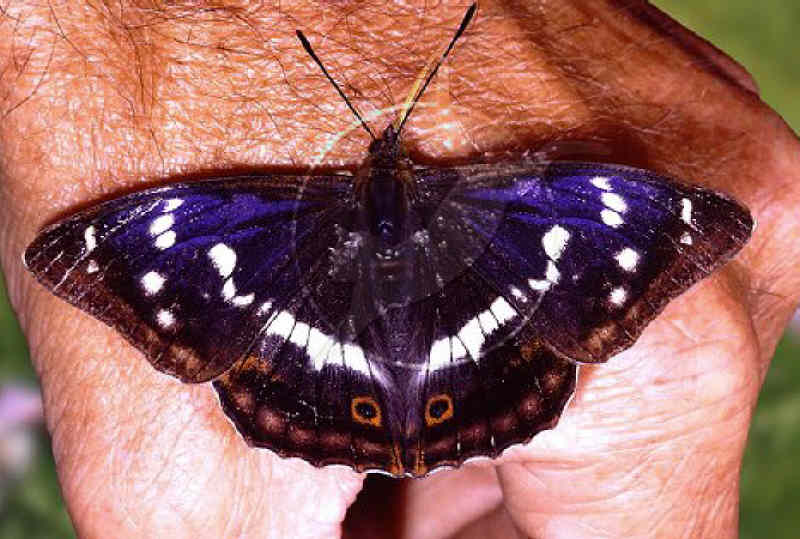This butterfly may sometimes be seen feeding on Carrion but can soar high into the treen line to feed on sugar rich aphid secretions
Resident
Decline and slight re-expansion of range.Habitat
The butterfly requires large blocks of broad-leaved woodland or clusters of smaller woods and/or dense scrub where the foodplants are abundant. This butterfly flies high in the tree-tops of well-wooded habiats in central-southern England where it feeds on aphid honeydew and tree sap. Adults are extremely elusive and occur at low densities over large areas. The males occasionally descend to the ground, usually in mid-morning, where they probe for salts either from road surfaces or from animal dung.The Purple Emperor declined steadily during the twentieth century and is now restricted to some of the larger woods in southern England. There has been a recent slight re-expansion in some areas.
It probably occurs as a breeding species inthe larger woodlands in central southern England. Colonies are of small size , made up of a handful of insects, but have a range that probably encompasses at least several hectares. The males in particular can be seen at least a kilometre away from the breeding areas, gathering at " master trees" , where they engage in "sorties" with other males, competing for the best vantage points. The females are seen less often. They visit the master trees to find mates, and thereafter disperse to egglaying sites, which may be some distance away. Master trees are usually mature oaks, but beech, aspen and conifers are also sometimes used. The trees will be tall specimens, and located on high ground, typically on the ridge of a hill.
Conservation
UK BAP status: Species of Conservation Concern
Butterfly Conservation priority: medium
European threat status: not threatened
Protected in Great Britain for sale only
Foodplants
The main foodplant is Goat Willow (Salix caprea). Crack-willow (Salix fragilis) and Grey Willow (Salix cinerea) are also used. Goat Willow (Salix caprea) is the most widely used foodplant although it also breeds on Grey Willow (S. cinerea) and more rarely, Crack-willow (S. fragilis). Eggs are laid on a wide range of tree sizes, ranging from medium-sized shrubs to tall canopy trees.


